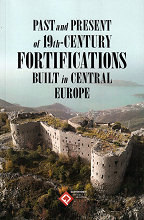
Past and present of 19th-century fortificatons built in Central Europe (köszöntő)
During the second half of the 19th century the permanent fortifications were considered as one of the most important elements of warfare. The strength of a nation's defence and military preparedness was measured through the effectiveness of the fortification systems. Accordingly, from the 1850s fortresses mushroomed throughout the territory of Europe. The General Staff of the Austro-Hungarian army was also committed to design a permanent fortification system.
By the eve of the First World War, coastal-, mountain- and land fortresses secured the strategic cities, military harbours and the borders of Austria-Hungary cutting off the enemies' potential attacking directions. The scientific and industrial inventions of the era had quite an effect on weapons and strategies. These developments brought forth many inventions in the study of fortification as well. The advent of the polygonal forts strengthened by steel elements, the intention to cover the fortresses with greenery, these are ideas all related to the second half of the 19th century. The palmy years of peace resulted in a very interesting sequence of the fortifications' development: many kinds of forts and fortresses were erected specialized to the topography and the purpose.
These structures, even if they have survived the storms of the 20th century, lost their original functions by the dawn of the modern age and became abandoned or in many instances remained only as ruins. The committed work of historians, experts of conservation and preservers of cultural heritage is trying to turn around these regrettable tendencies. Fortifications have universal values, as an element of our built military heritage saving them is a common duty.
This booklet contains the brief summaries of the lectures delivered at the international conference that took place in Komárom in September 2019. The conference was organized by the MoD Military History Institute and Museum and was hosted by the Fort Monostor Non-profit Ltd. When reading this booklet we get a taste of the history of fortifications in Central Europe, particularly the events of the First World War and we get introduced to the revaluation and management of these structures' so-called "second life". The colourful photographs also guide us to the various sceneries the former Austro-Hungarian Monarchy.
Col. Dr. Vilmos Kovács
Commander of the MoD Military History
Institute and Museum